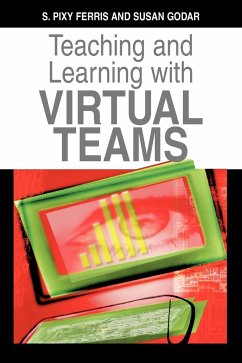
Cultivating Creative Collaboration in Student Virtual Teams in Higher Education
Design and Climate
Herausgeber: Nemiro, Jill E.
Versandkostenfrei!
Versandfertig in 1-2 Wochen
139,99 €
inkl. MwSt.

PAYBACK Punkte
70 °P sammeln!
Over the last twenty years, creativity has been shown to be a critical element to contemporary organizations, especially as global competition, the need for innovation, and technological advances have intensified. The rise of technological advances has produced an increase in remote work and virtual teams, especially within business settings to deal with global competition and the rise of non-routine work. However, the COVID-19 pandemic generated an even greater increase in the utilization of remote work and virtual teams not only in business but in higher education as well, and it appears tha...
Over the last twenty years, creativity has been shown to be a critical element to contemporary organizations, especially as global competition, the need for innovation, and technological advances have intensified. The rise of technological advances has produced an increase in remote work and virtual teams, especially within business settings to deal with global competition and the rise of non-routine work. However, the COVID-19 pandemic generated an even greater increase in the utilization of remote work and virtual teams not only in business but in higher education as well, and it appears that this trend is not going away. Thus, it is crucial to teach students how to work effectively in virtual teams to prepare them for their future careers. Training current employees in virtual teaming skills is also necessary, as more professionals are transitioning into remote or hybrid work. Cultivating Creative Collaboration in Student Virtual Teams in Higher Education: Design and Climate provides an in-depth understanding of how to design academic courses and business training experiences that can offer employees and college-level students hands-on experiences to develop virtual teamwork skills. It aims to nurture students professional development by enhancing their creativity while working in virtual teams and to assist faculty in designing and implementing effective virtual team learning experiences in their courses. Covering topics such as intentional team culture, information sharing, and setting communication norms, this book is an excellent resource for educational leaders, educators, instructional designers, technology instructors, human resource (HR) managers, business leaders, professionals, researchers, scholars, academicians, and more.












